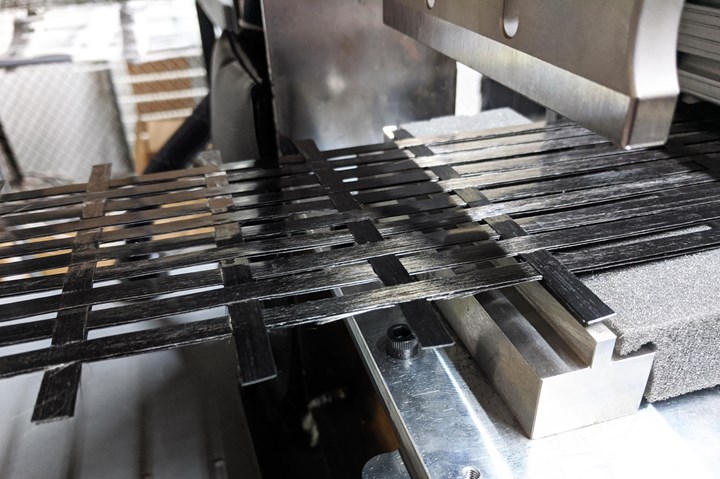WEAV3D awarded NSF funding to further develop next-generation composite forming machine
Two-year award will fund design, fabrication and testing of composite machine, which addresses high part cost and low production throughput in composite manufacturing.

Photo Credit: WEAV3D Inc.
WEAV3D Inc. (Norcross, Ga., U.S.) an innovator in composite materials, manufacturing processes and processing equipment, has been awarded a $999,943 National Science Foundation (NSF) Small Business Innovation Research (SBIR) Phase II grant. This two-year award will fund the design, fabrication and testing of a continuous composite forming machine that uses ultrasonic welding to increase the production throughput of WEAV3D’s patent-pending continuous composite forming process.
According to the company, this SBIR Phase II project addresses the traditional challenges of composite manufacturing. While these processes can produce lightweight, stiff and strong components, they suffer from high part cost and low production throughput. The WEAV3D process, called Rebar for Plastics (CW reported on this highly tunable technology, see “Automated weaving system targets high-performance, high-volume applications”), combines weaving and composite consolidation into an automated, continuous process that reduces waste, cycle times and material handling costs. Further, the approach is said to improve part stiffness and strength while minimizing weight, enabling new innovations in the automotive and construction markets at a fraction of the cost and cycle time associated with traditional composite manufacturing.
Traditional composite manufacturing methods also rely on energy-intensive curing processes, which translate to high embodied energy, or energy per unit mass, and contribute to the overall CO2 footprint of the finished part, WEAV3D says. WEAV3D was previously awarded a $224,718 NSF SBIR Phase I grant to investigate alternative thermal consolidation methods, with the goal of reducing embodied energy by at least 60% relative to the current infrared consolidation baseline. Of all the consolidation techniques evaluated, ultrasonic welding showed the best combination of speed, efficiency and weld quality.
“During Phase I, we demonstrated that replacing infrared heating with ultrasonic welding for thermoplastic consolidation yields an 85% reduction in embodied energy, all while matching or exceeding the production speed of the infrared system,” explains Chris Oberste, Ph.D., founder and CEO of WEAV3D. “Our proposed research activities for Phase II will translate these embodied energy reductions into production speed improvements through the fabrication and testing of our next-generation composite forming machine.”
WEAV3D’s next-generation system will be built with automotive production speed and quality standards in mind, with a target production capacity of 200,000 to 300,000 automotive door panel size parts per year.
Related Content
-
SMC composites progress BinC solar electric vehicles
In an interview with one of Aptera’s co-founders, CW sheds light on the inspiration behind the crowd-funded solar electric vehicle, its body in carbon (BinC) and how composite materials are playing a role in its design.
-
Automotive chassis components lighten up with composites
Composite and hybrid components reduce mass, increase functionality on electric and conventional passenger vehicles.
-
Cryo-compressed hydrogen, the best solution for storage and refueling stations?
Cryomotive’s CRYOGAS solution claims the highest storage density, lowest refueling cost and widest operating range without H2 losses while using one-fifth the carbon fiber required in compressed gas tanks.








.jpg;maxWidth=300;quality=90)



